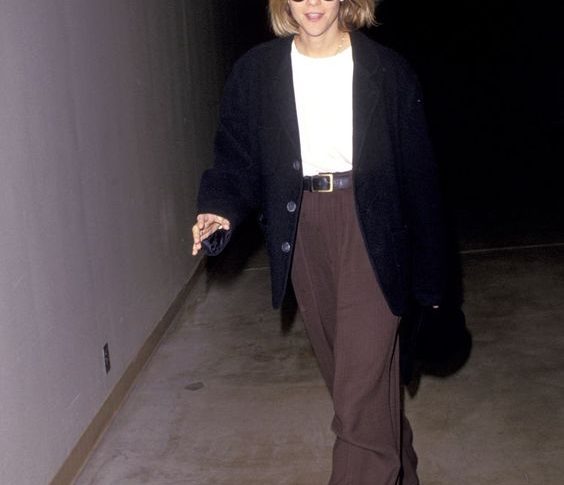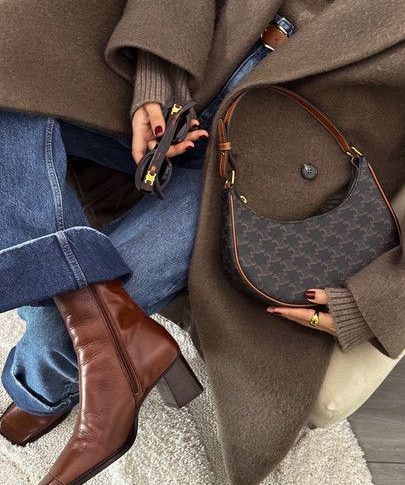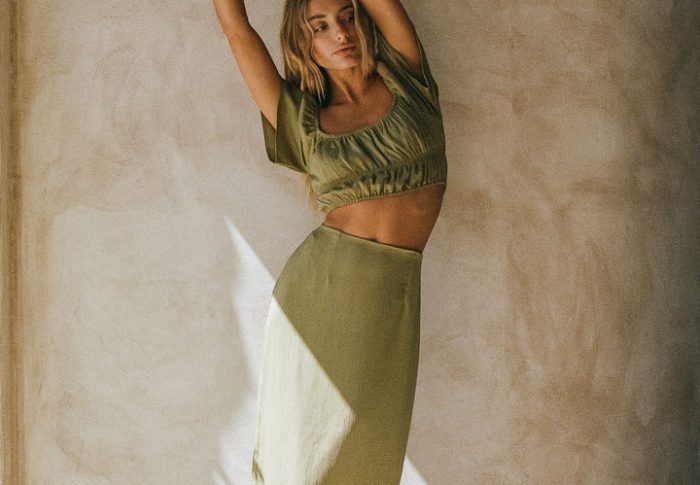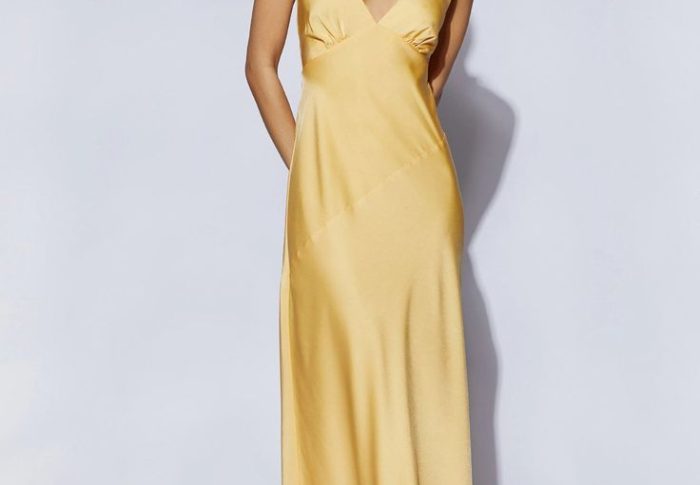Is the underwear market in another interruption?
 In Soho’s Aerie pop-up store, the body’s positive Victoria secret message since the release of the first free Photoshop free movement since early 2014 has become the brand’s calling card that has been perfectly packaged and displayed on the wall Graffiti or single swimsuit. “There is no problem,” read a sign, next to a buffering covered banquet. There is a yoga studio next to the locker room. Through the checkout counter, read the “keep true” and “can not be retouched” pins filled with color bucket. They are free to buy donations to the National Dietetic Association of consumers.
In Soho’s Aerie pop-up store, the body’s positive Victoria secret message since the release of the first free Photoshop free movement since early 2014 has become the brand’s calling card that has been perfectly packaged and displayed on the wall Graffiti or single swimsuit. “There is no problem,” read a sign, next to a buffering covered banquet. There is a yoga studio next to the locker room. Through the checkout counter, read the “keep true” and “can not be retouched” pins filled with color bucket. They are free to buy donations to the National Dietetic Association of consumers.
Aerie is just a fraction of the overall business of American Eagle, and is resonating with the consumer community, which is increasingly tired of traditional sexy underwear brands such as Victoria’s secrets. In 2015, Aerie’s sales grew 20% year-on-year, up 23% year-over-year (NetEase’s net revenue fell 1% to $ 1.1 billion in 2016).
At the same time, Victoria’s secret – still dominating the underwear market giant, at least $ 12 billion in the United States – has been trying to keep the momentum. Sales fell 13% year on year, down year on year as the company continued to feel the impact of stopping its non-sportswear and swimwear series in 2016. (The business has reorganized about three barrels – underwear, Gen Z target pink range and beautiful – and pull back the promotion).
With Victoria’s secrets, a series of destructive niche underwear brands – such as lively, Naja, negative underwear and third love – have also entered a competitive environment, selling a new type of inclusive, women-centered The identity, more about the wearer and less about who might be looking at her. They also offer a wider range of nude colors – serving a wider range of races – designed to reduce the price of competitors by direct-to-consumer distribution. Volkswagen brands such as Aerie and Madewell, launched an intimate relationship in February, have been noted. In March, Ph illips Van Heusen acquired True & Co, which is a vertically integrated online brand, proud of the right price for the undisclosed number.
Michelle Cordeiro Grant, founder of Lily’s brand-oriented niche brand, said: “The category has been neglected for so long that he has worked secretly in Victoria.” This is still the old retailer. ”
Now, Amazon is entering a brand of private label underwear brand. The series, called Iris & Lilly, has been launched in the UK, with limited size and color.
Amazon has several advantages. The complexity of its data operations enables the company to generate and quickly iterate its private label based on market feedback. Once the label gets traction, the size of the Amazon means that it can negotiate the lowest price from the supplier. In fact, the company has offered a bra cost as low as $ 8. (By contrast, Target’s average price is about $ 15, while Victoria’s secret average of about $ 40)
According to Piper Jaffray, Amazon also estimates that there are 63 million registered members of the Prime family, Consumer Intelligence Retail Partners is a family of more than $ 112,000 per year, which means that its products Line is likely to quickly gain market share.
“Our goal is to make Amazon the best place to buy fashion online,” an Amazon spokesperson said in a statement. “It is important that our customers find what they are looking for, so we’re constantly exploring and testing Creating a product for a specific category at this point allows us to increase the overall classification available to Amazon customers. ”
The question is: does Amazon have to destroy the underwear under the premise of the opportunity to reach a significant scale? What are they doing to defend themselves?
“This is what we talk about every day,” said Jennifer Foyle, president of Aerie’s global brand. “The Aerie Real platform is sure to separate us and there are a lot of ways to take advantage of this platform. On the one hand, Aerie doubled in the store, aiming to have a total of 200 separate locations by the end of the year, as a way to further distinguish the only players with online – including Amazon. Nevertheless, 40% of Aerie’s sales were conducted online “I think today is important to really take advantage of this all – round customer … Foyle said that many women really want to enter the store and gain experience.
Suitable for just creating and selling underwear, especially one of the many challenges of bra, its structure can be more structured to have 18 to 25 components. “This may be the hardest product I ever had the opportunity to be involved,” said Cordeiro Grant, founder and CEO of Lively.
“There are few manufacturers in the world and there are a lot of orders for these orders,” said Catalina Girald, CEO and co-founder of Naja. “Catalina Girald, the underwear brand launched in 2013, explains that” Manufacturer’s power “of the product”, also focused on the impact of production on the environment.
Girald said that the typical minimum cost for Asian plants is 3,000 to 10,000. “It makes it more difficult to have a wide variety of diversity in fashion and print, as well as in size and color,” she says, adding that Naja carries 22 to 32 dimensions in each bra, especially in larger designs, especially if The bra cup is molded. Cordeiro Grant agrees: “This is very SKU intensive. ”
Girald explains: “Because underwear is a technical product, you can not just zoom in from a 36D-size mold and zoom it up and think it will continue. Predicting the entire range of demand is another challenge,” she said. : “We want to be able to offer a wider range of sizes, but from the point of view of inventory management, the cost of capital to carry so many investors at one time is prohibitive. ”
Naja has its own factory in Colombia, controlling 80% of the supply chain, which makes Girald able to keep the price in the market without sacrificing the brand value of attracting customers. (Naja pay their workers above market wages and cover their children’s uniforms and meals, etc.). But Girald said the company is facing enormous pressure to lower prices. “We are looking for the non-discount market of Victoria’s [shoppers], but we find that the millennial consumers are starting to cut prices.” “Those are our customers, so we have to make sure we are not too far away.” We see retailers also feel driven.
As a result, Naja lowered the price of its shots ranging from $ 38 to $ 65. Girald said: “We have found a lot of space to create less clothing,” Naja’s profit margin between 75% to 88%. “At our volume, it is quite impressive.

Underwear retailers want to appease the price of sensitive shoppers, Bralette’s popularity has passed. On the one hand, they often have small, medium, large, and reduced traditional dimensions. Aerie’s Foyle said: “They are a more value-oriented product, cheap and happy, funny fashion, he added, the company also invested in a lightweight bra, no expensive molded cup. She said:” We really Of the forecast, this push-ups category looks very old. “We first dominated [by bralette], so we were able to balance our [average unit retail] strategy very well. “Cordeiro Grant said the Bralette category stayed here, but the current growth will be somewhat stable, she said:” tight jeans is the mainstream, not the trend. “I think the brush is the same. ”
Cordiero Grant said: “I think there is a lot of reachability in this category, especially in terms of price, and so on, so where do we play?” Somewhere in the mid-1920s. “As we are getting bigger and bigger, we are getting more complex and expensive.”
Amazon has a history of solving complex and expensive categories, but will the special challenges of underwear prove to be tricky?
“People often want a service level or insight, knowledge or guidance about underwear,” says Kit Yarrow, a consumer psychologist and professor at the University of San Francisco’s Golden Gate University. “This has a lot to do with age and body type. I think a mature person or a full bust of people will only laugh (on $ 8 bra) – “there is no way to take care of my way”. ”
More mature customers may feel better service Soma Intimates, underwear retailers known for their extensive size, 2016 annual sales of $ 345 million. “Women are willing to pay for comfortable and high-quality solutions,” said Kimberly-Clark’s senior vice president of marketing. The retailer who carries third-party brands and private brands is the healthiest business of the parent company Chico.
Foyle added: “Aerie is a brand we are proud of when you consider Amazon, they may not be able to have Aerie Real movement and on behalf of something.” I think if we can provide a different way of expression and experience, then We will still win. “





-
-
6 months
Tagged fashion, Outfits, women